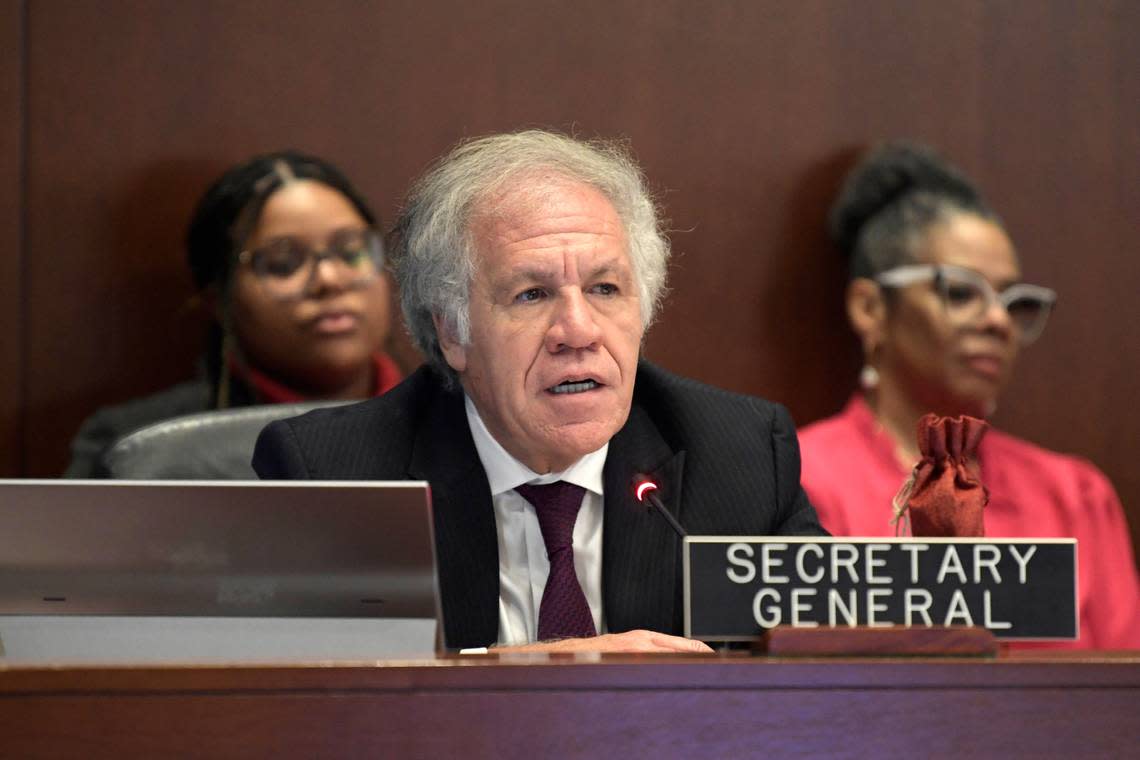To revive the OAS, let’s give women a turn at the top | Opinion

When Colombia’s Alberto Lleras Camargo was elected the first secretary general of the Organization of American States in 1948, no one thought it remarkable that he was a man.
At the time, it was almost unthinkable for a woman to hold the top job at major political institutions.
In 1948, women had not even won the right to vote in presidential elections in at least a dozen Latin American and Caribbean countries.
Thankfully, that kind of exclusion now seems as archaic as a steam locomotive.
And with the election in June of Claudia Sheinbaum, Mexico follows Brazil, Argentina, Chile and ten other nations in the Americas in electing a woman to serve as head of state.
This profound change mirrors advances in gender equality that have reshaped every sphere of public and private life in our hemisphere over the last half-century. Well—almost every sphere.
The OAS is a glaring example of a peculiar type of institution that has stubbornly resisted the shift toward equality: it is one of at least 20 international organizations that a woman has never run. Not once. It is hard to believe, but this group includes the United Nations, the World Bank, the Inter-American Development Bank, the Food and Agriculture Organization, and many other bodies with the power to make decisions that affect all humanity.
These are public institutions created to tackle problems that impact society as a whole, including the women and girls who make up more than half of the world’s population.
Taxpayers of all genders finance the operating capital of these organizations.
As a fundamental matter of fairness and accountability, the leadership of these institutions should mirror the societies they are supposed to represent. What can possibly excuse the uninterrupted absence of women from their top jobs?
For a long time, the “pipeline problem” was patronizingly offered as an explanation. We were asked to believe that there are simply not enough women with deep experience in diplomacy, law, geopolitics, peace and security, trade, and economics. Despite the best intentions, governments are unable to find qualified female candidates to fill these vacancies.
Today, when tens of thousands of women are recognized as leaders in these fields, this notion is absurd.
The OAS, which begins this week with the process of nominating candidates to succeed Uruguay’s Luis Almagro as secretary general in 2025, is emblematic of this problem. Incredibly, of the 15 elections it has held since 1948, only one (in 2019) even included a woman candidate.
On most occasions, one or two male candidates made a single presentation of their plans at OAS headquarters prior to an “election” that was seen as a foregone conclusion.
A reputation as a bastion of gender exclusion is certainly not the main reason for what has been described as the “diminished presence” of the OAS in issues such as the defense of democracy. But if it wishes to reclaim its standing as an effective forum for addressing crises in areas such as governance, transnational crime, and immigration, the OAS needs to trigger a confidence shock.
This could immediately be achieved if many OAS member countries put forward a female candidate for the next secretary general. Instead of a single speech on the eve of the election, these candidates should make multiple public appearances at universities or other venues throughout the coming year.
There are early indications that OAS member governments would support this idea. An open, dynamic, and genuinely competitive election featuring women candidates would command attention in the Americas and around the world. It might just give the OAS a chance to model the kind of inclusive leadership and consensus-building that our times urgently demand.
Susana Malcorra is Argentina’s former Minister of Foreign Affairs and the co-founder and President of GWL Voices, an organization dedicated to advancing women’s leadership in global cooperation

